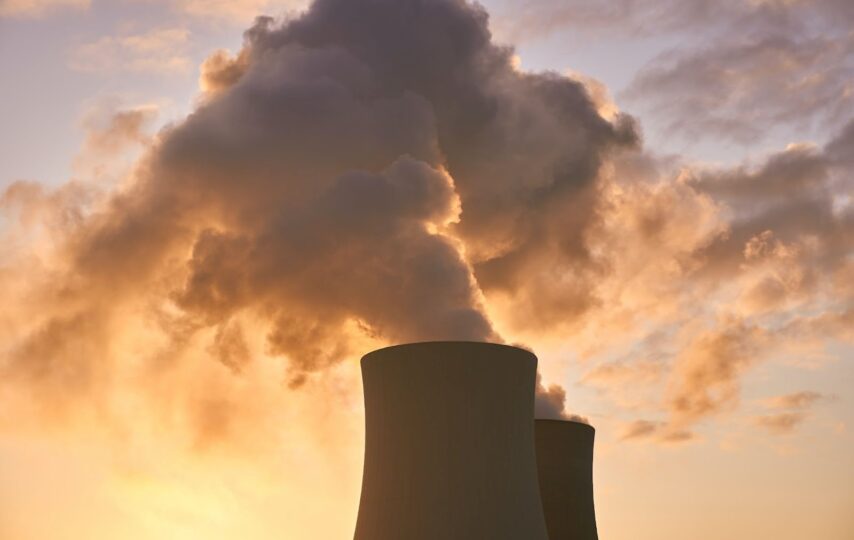Airborne particulate matter (PM) has been recognized as a serious public health concern for over a century. It can cause a wide range of health problems, from respiratory issues to cancer, and should be monitored to protect people from the harmful effects.
In recent years, there has been an increased focus on the characterization and control of diesel emissions, which are a significant source of PM.
This article provides an overview of particulate matter and its measurement, with a particular focus on diesel emissions. We will discuss the harmful effects of diesel emissions on humans and describe how to build a reliable air particulate monitor solution in challenging environmental conditions.
What is Particulate Matter (PM)?
Particulate matter is a term used to describe a wide range of small particles that are present in the atmosphere. These particles can be classified according to their size, shape, and chemical composition.
The most common type of particulate matter is PM, which refers to particles that are less than or equal to 100 micrometres in diameter. It is important to monitor particulate matter in order to protect people from the harmful effects.
One source of particulate matter is diesel emissions. These emissions contain a variety of harmful compounds, including particulate matter, nitrogen oxides (NOx), and sulphur dioxide (SOx). Exposure to diesel plume and other pollutants has been linked with a wide range of adverse health effects, including respiratory problems, heart disease, and cancer.
A particulate monitor is needed to provide accurate measurements of ambient particulate matter concentrations. Accurate measurements are necessary to allow us to understand the nature and magnitude of the health risks associated with particulate matter exposure and to design effective control strategies.
Why Measure Ambient Particulate Matter?
There are many reasons why we should measure ambient particulate matter. Some of the most important reasons include:
- Particulate matter is a major component of outdoor air pollution and has been linked to a wide range of adverse health effects, including respiratory problems, heart disease, and cancer.
- Particulate matter can vary significantly in concentration from place to place and time to time. This variability makes it difficult to estimate the health risks associated with exposure to particulate matter.
- There is a growing demand for real-time air quality information so that people can make informed decisions about their outdoor activities.
- Many countries are now implementing regulations limiting the amount of particulate matter that can be emitted into the atmosphere.
What Instruments Can Be Used to Measure Airborne Particles?
There are a variety of instruments that can be used to measure airborne particles. The most common type of instrument is the particulate matter (PM) monitor. PM monitors can be classified into two categories: passive and active.
- Passive monitors do not generate any radiation and rely on the optical properties of the particulates to measure their concentration.
- Active monitors generate an electrical signal that is proportional to the number of particulates in the air.
PM monitors can be further divided into three categories based on their measurement principle: gravimetric, thermal, and electronic beam attenuation.
- Gravimetric PM monitors use a filter to collect the particulates and then weigh them to determine their concentration.
- Thermal PM monitors heat a small sample of air and detects the amount of light that is emitted.
- Electronic beam attenuation monitors use a laser to detect the number and size of particulates in the air.
PM monitors can also be classified by their operating principle: impact, diffusion, or condensation.
- Impact PM monitors fire a particle into the air and count the number collected on a filter.
- Diffusion PM monitors collect particles as they pass through an opening in the monitor.
- Condensation PM monitors grow particles on a cold surface and then measure their size.
Which type of particulate monitor is best for your application depends on many factors, including the range of particulate sizes you need to measure, the environmental conditions, and your budget.
Building a Reliable Air Monitoring Solution in Challenging Environmental Conditions
Many factors can affect the accuracy of particulate matter measurements, including ambient temperature and humidity, wind speed and direction, and the presence of dust or other contaminants. In addition, a particle monitor requires periodic calibration and maintenance to ensure accurate measurements. Building a reliable air monitoring solution in challenging environmental conditions requires careful consideration of these factors.
Remember that ambient particulate matter can vary greatly in concentration, so it is important to have a reliable particulate monitor in order to make informed decisions about your workers’ health and safety. Stay safe and healthy by measuring particulate matter levels or visit our website to learn more.













